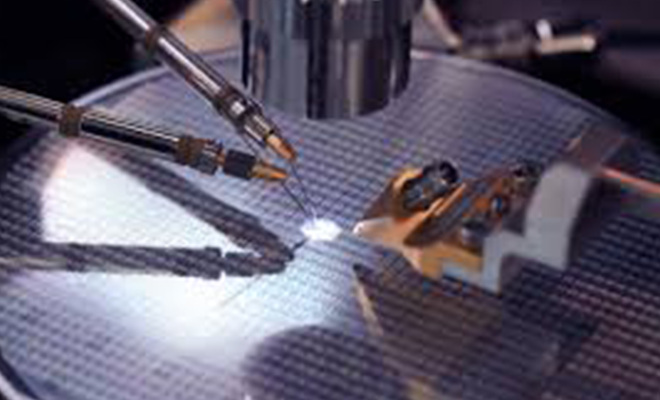Wafer foundry industry is facing a major challenge of capacity utilization, it is reported that UMC, world advanced and LPC and other major foundershave reduced the quotation in the first quarter of next year, the range is as high as double-digit percentage, the project customer decline is higher up to 15% to 20%, the major wafer foundersare deeply in the capacity utilization rate of 60% defense war.
Foundry foundry price wave set off
Recently, the price of mature wafer foundry processes has ushered in a new low after the epidemic, which has affected the gross profit margin and profit trend of relevant enterprises. In the market, only TSMC's price is relatively strong, and almost all other foundries are spared.
In order to improve capacity utilization, foundries have taken emergency action to reduce prices. Industry insiders pointed out that although the PC and mobile phone market has recently shown signs of recovery, but because the client takes into account external factors such as inflation, the film investment strategy is still relatively conservative. The current order intensity has only recovered to about 30% or 40% of the pre-epidemic level, forcing wafer founders to take more aggressive price reduction measures to avoid losing orders to competitors who are willing to cut prices, leading to a further decline in capacity utilization.

Manufacturers of mature 8-inch wafer foundry processes were hit the hardest, while companies focused on this area suffered from overordering of integrated component factories (IDM) and IC design plants, resulting in inventory overhang. With some products moving to 12 inches, capacity utilization at 8-inch foundries has been maintained at a low level.
Although UMC has adopted a price reduction strategy, TSMC is still able to bundle sales with mature processes because of the support of advanced processes, and its mature processes are relatively strong.
Umc said that the 8-inch wafer will have a significant price reduction, while the 12-inch wafer will not be adjusted. It is understood that in order to stimulate large customers to place orders, UMC has implemented a 5% price discount, considering the weak demand in the first quarter of next year, they plan to expand the price cut, guide customers to increase investment efforts, the price cut is expected to reach a double-digit percentage.
World Advanced has also joined the ranks of price cuts, the second half of the offer is expected to fall by 5%, while the large volume of customers may get a 10% discount space. In the first quarter of next year, the World Advanced Plan will cut prices again, by a single-digit to double-digit percentage. The world's advanced executives have mentioned at the French conference that in view of the fierce price competition, they plan to make flexible adjustments in the short term.
Under the influence of conservative customer investment, LPC fell into a loss in the third quarter, and the capacity utilization rate was only about 60%. People familiar with the situation said that the company also plans to take price cuts to improve capacity utilization.
The mature wafer foundry process is greatly reduced, and the IC design factory benefits
Mature wafer foundry process manufacturers have recently implemented a round of large-scale price cuts to maintain capacity utilization. Industry observers believe that this will bring respite to chip factories mainly engaged in mature processes, such as driver ics, power management ics and microcontroller (MCU) manufacturers. After a long period of inventory adjustment, with the decline in wafer foundry costs, the relevant IC design plants can also breathe a little easier.
As most of the IC design plants and wafer foundries are long-term partners, the consumer market entered the winter in the second half of last year, affecting related industries such as PC, smart phones and network communications. This not only makes the inventory level of the IC design factory soar, but also the kinetic energy of the film has dropped significantly. Some chip factories are facing pressure to sell huge inventories and terminate long-term contracts with foundries, leading to a significant decline in gross margins or even losses.
With the inventory adjustment has been more than a year, the customers of the IC design factory have appeared urgent orders to replenish the inventory. Some end markets are also showing signs of recovery. Led by foundry price cuts, this helped improve the operating cost structure.
Wang Shouren, general manager of Lianyong, said that the current overall inventory adjustment has come to an end, and the company's wafer casting is gradually returning to normal. Next year's demand has begun to negotiate with wafer foundries, and the company has made preparations. He also said that whether it is competitive or advanced process fabs, Linyong will evaluate, including 28 nm and 22 nm high pressing process.
CAI Rongzong, deputy general manager of Shengqun Business marketing Center, revealed that the film investment plan in the fourth quarter of this year is expected to be reduced by 40%, and the amount of film investment will gradually pick up next year. Considering that foundry prices are expected to decrease by about 10%, this is expected to drive a stable recovery in gross margin in the second quarter.
Smic forecast: the future global foundry capacity fear of excess
Zhao Haijun, chief co-CEO of SMIC, said in a recent earnings presentation that many countries and regions are individually expanding their semiconductor production capacity due to geopolitical influences. However, he believes that overall global demand is not enough to meet the expansion rate of this capacity, and he personally predicts that there may be a global foundry overcapacity in the future, which will take a longer time to digest.
According to the Securities Times, Zhao Haijun pointed out that in some ultra-large markets, such as the Chinese mainland and the United States, relying on local production capacity alone is not enough. In addition, SMIC will work on mature technology nodes to help customers upgrade their products to first-class levels and compete internationally with cost advantages.
Zhao Haijun believes that the overall market demand in the second half of this year failed to recover as expected, there was no "V-shaped" or "U-shaped" rebound expected at the beginning of the year, and the overall market is still stagnant at the bottom, showing a "double bottom" trend.
In the Chinese mainland market, Zhao Haijun said that the problem of high product inventories that began in the third quarter of last year has been alleviated. In addition, the inventory level in Europe and the United States is high, the inventory of automotive products is beginning to backlog, and the orders of customers are rapidly tightening.



